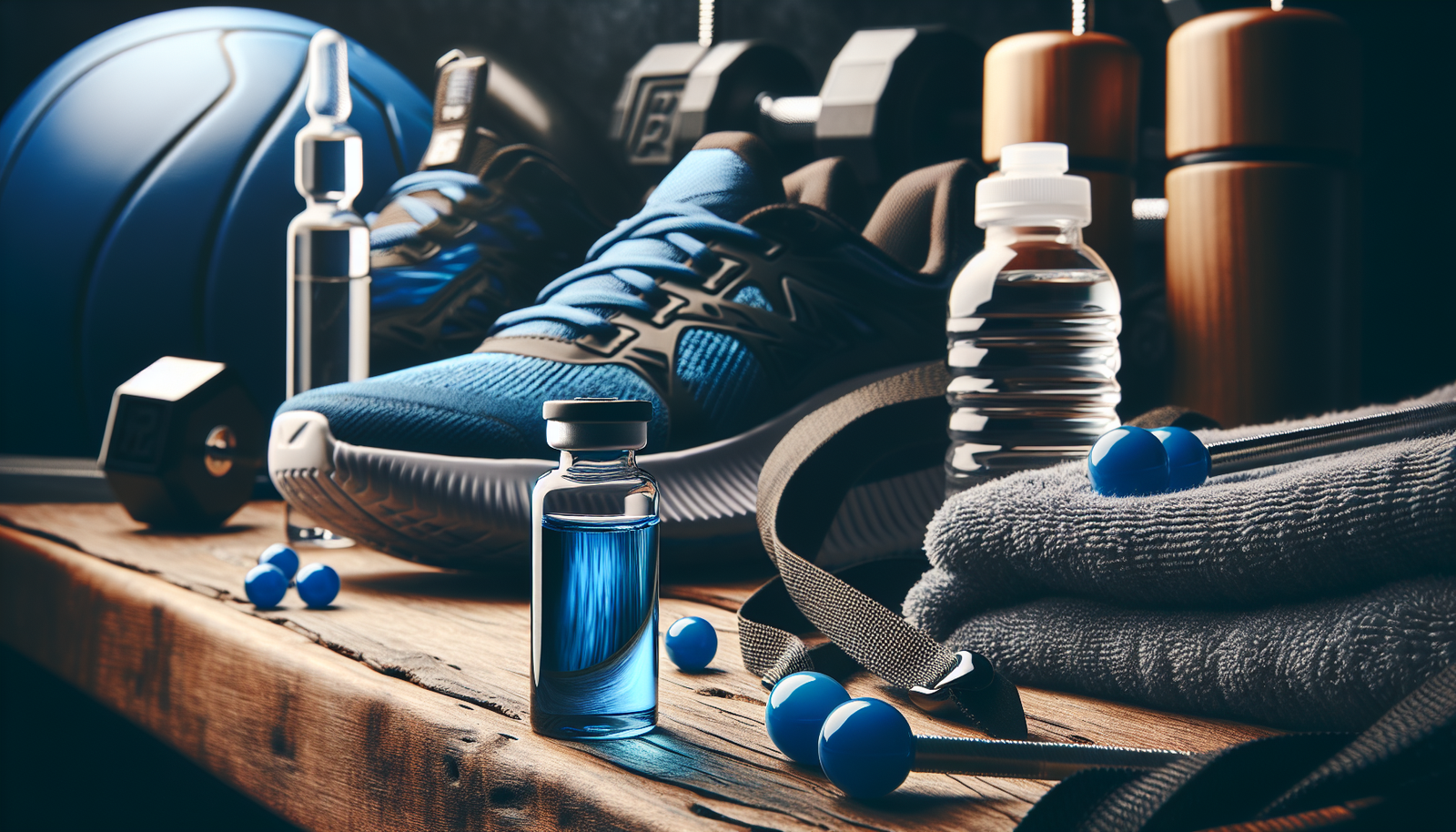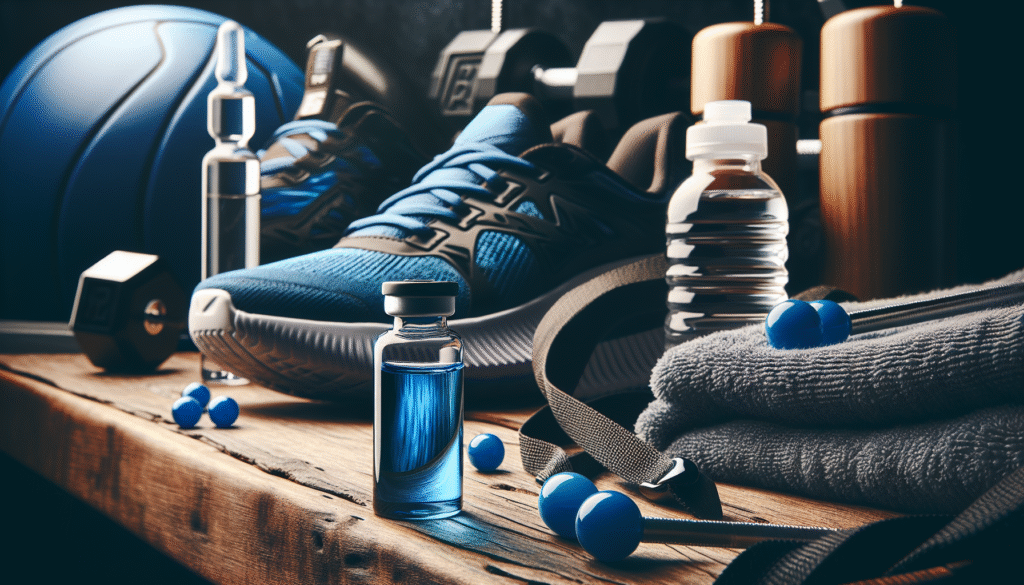
What if a simple dye could enhance your athletic performance?

Understanding Methylene Blue
Methylene Blue is a synthetic compound that has garnered attention for its potential benefits beyond its historical use as a dye. Originally developed in the late 19th century, it has found applications in various medical fields, including as a treatment for conditions such as methemoglobinemia. More recently, however, enthusiasts and researchers have begun to explore its potential role in enhancing athletic performance.
Your curiosity about Methylene Blue may stem from a desire to optimize your training regime or achieve peak performance in competitions. Let’s delve deeper into this intriguing compound, its mechanisms, and its alleged benefits.
What Is Methylene Blue?
Methylene Blue (MB) is a chemical compound with the formula C16H18ClN3S. It appears as a dark blue powder that rapidly dissolves in water to create a vivid blue solution. While it primarily serves as a dye, its medicinal properties are significant. It acts as a redox agent and has shown potential in various medical applications, especially in the field of neuroscience and biochemistry.
Historical Uses of Methylene Blue
Historically, Methylene Blue has been associated with various medical uses, which lay the groundwork for its exploration in performance enhancement:
- Antiseptic Properties: It was used in the treatment of urinary tract infections due to its antimicrobial properties.
- Methemoglobinemia Treatment: MB is employed to treat methemoglobinemia, a condition where hemoglobin cannot effectively release oxygen to body tissues.
By understanding these historical uses, it becomes evident why researchers and athletes alike are intrigued by its potential in the realm of sports.
Methylene Blue and Cellular Respiration
At the core of Methylene Blue’s proposed benefits for athletic performance is its potential impact on cellular respiration. Your body relies on a process called oxidative phosphorylation to convert glucose into ATP (adenosine triphosphate), which serves as the primary energy currency of cells.
Enhancing Mitochondrial Function
Mitochondria, often referred to as the powerhouses of the cell, play a crucial role in energy production. Methylene Blue is thought to enhance mitochondrial function by:
- Acting as an Electron Carrier: MB may facilitate the transfer of electrons in the mitochondrial respiratory chain, improving cellular respiration efficiency.
- Reducing Oxidative Stress: It can potentially scavenge free radicals, thereby lowering oxidative stress that often accompanies intense physical activity.
This enhancement of mitochondrial function might translate to improved stamina and endurance during athletic endeavors, making it an appealing option for athletes seeking an edge.
The Science Behind Methylene Blue
Scientific studies investigating Methylene Blue’s impact on performance involve complex biochemical processes. You might be wondering what the research has concluded regarding its effectiveness. Let’s explore some of the supporting evidence and examine potential drawbacks.
Clinical Studies and Findings
Several studies have sought to ascertain Methylene Blue’s effects on athletic performance. Here are some notable findings:
| Study | Key Findings |
|---|---|
| Brown et al. (2016) | Showed that MB administration improved exercise capacity and reduced the perception of effort in endurance athletes. |
| Zhang et al. (2019) | Found that MB supplementation increased mitochondrial biogenesis and improved exercise tolerance in animal models. |
| Munch et al. (2020) | Reported enhanced cognitive functions following MB usage, which may aid in focus during competitions. |
While these studies provide intriguing insights into the potential benefits of Methylene Blue, further research is imperative to establish clear connections and delineate effective dosages.
Potential Risks and Controversies
Despite the promising results, it is essential to consider the potential risks associated with Methylene Blue supplementation:
- Toxicity Levels: High doses of Methylene Blue can be toxic and lead to adverse side effects, such as hemolytic anemia, especially in individuals with G6PD deficiency.
- Interaction with Medications: MB may interact with various medications, including certain antidepressants, leading to dangerous side effects.
Athletes must weigh these risks carefully before incorporating Methylene Blue into their regimen.
Methylene Blue in Practice: Dosage and Administration
You may be contemplating how to administer Methylene Blue if you decide to experiment with its performance-enhancing potential. Understanding the appropriate dosages and methods can help you maximize its benefits while minimizing risks.
Recommended Dosage
As with many supplements, determining the right dosage of Methylene Blue is crucial. Generally, doses range from 0.5 to 4 mg/kg body weight. However, the best approach is to start with the lowest effective dose and assess your body’s response. This gradual approach will minimize potential side effects.
Administration Methods
Methylene Blue can be administered through various methods:
- Oral Supplementation: Available in capsule or liquid form, oral administration is the most common route.
- Intravenous Injection: Typically reserved for clinical settings, this method allows for rapid absorption and immediate effects.
You should always consult a healthcare professional before starting Methylene Blue, especially regarding intravenous administration.

Myths Versus Reality: Evaluating the Evidence
In the face of emerging excitement surrounding Methylene Blue’s athletic applications, distinguishing between myth and reality is vital. While preliminary studies suggest potential benefits, several factors warrant a more cautious evaluation.
Performance Enhancement: Fact or Fiction?
The enthusiasm surrounding Methylene Blue often raises questions about its reliability as an athletic enhancer. Your decision to incorporate Methylene Blue should stem from your comprehension of the current research landscape.
- Context of Use: Methylene Blue may not result in drastic performance improvements for all individuals and may yield variable results based on fitness levels, training, and individual biology.
- Sustainable Results: Long-term efficacy remains unproven, as most studies have primarily focused on short-term outcomes.
Alternative Enhancements: Other Techniques to Consider
While Methylene Blue may capture your attention, it is crucial to remain informed about other established methods to enhance athletic performance. Your training regime should not solely rely on one supplement.
Nutritional Approaches
Integrating a balanced diet rich in macronutrients and micronutrients is vital for optimal athletic performance. Key nutritional components include:
- Carbohydrates: Provide a quick source of energy during exercise.
- Proteins: Facilitate muscle repair and growth post-exercise.
- Fats: Serve as a long-lasting energy source during endurance activities.
A diet tailored to your specific needs and athletic goals can significantly impact your performance.
Psychological Techniques
Mental fortitude is fundamental to any athlete’s success. Incorporating psychological techniques can improve focus, reduce anxiety, and bolster overall performance. Consider these methods:
- Visualization: Envisioning success can enhance motivation and focus during training and competition.
- Mindfulness: Practicing mindfulness techniques can foster mental resilience and reduce performance anxiety.
Training Regimens
Your training program should include a blend of aerobic and anaerobic exercises tailored to your sport. Strong focus on recovery methods, such as stretching and proper hydration, plays an essential role in maintaining peak performance.
Final Thoughts on Methylene Blue
The exploration of Methylene Blue for athletic performance presents both exciting opportunities and cautionary notes. As you consider incorporating this dye into your regimen, it is essential to balance enthusiasm with informed decision-making.
While initial research celebrates the potential role of Methylene Blue in enhancing mitochondrial function and possibly improving athletic performance, the evidence remains inconclusive. The risks associated with its use, along with confounding variables such as individual physiology and supplement interactions, demand careful consideration.
Ultimately, the best path to optimizing your athletic performance will blend research-backed strategies along with personal experience and careful monitoring of your body’s responses. This holistic approach, encompassing nutrition, mental techniques, and effective training regimens, will serve you well in your pursuit of excellence in athletics.
Your journey towards enhanced performance can be complex, but through careful exploration, you are well-equipped to navigate the multitude of options available. Consider Methylene Blue one of many tools in your quest for athletic success but remember the foundational principles that sustain long-term growth and achievement in your sport.